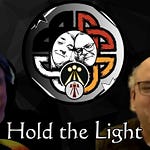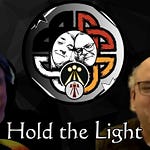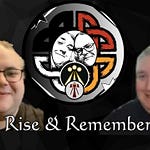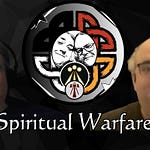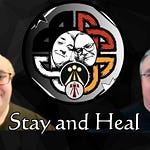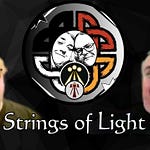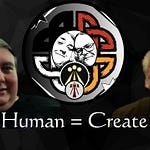The Horse That Would Not Leave
The Solar Horse That Wouldn’t Let Me Go
Some ideas arrive like strangers. Others show up like old friends you had forgotten, standing at the edge of memory, waiting. The Solar Horse came to me like that. I was reading along, tracing through the histories and mythologies of the Levant, when I found a reference to horses dedicated to the sun in ancient Judah. That was it. No explanation. No story. Just a brief note that they were there and then, later, they were gone. The more I searched, the thinner the record became, until there was almost nothing at all. And yet I couldn’t let it go. Recognition hit me first, and obsession followed. It felt like remembering one of my childhood companions, one of those “imaginary” friends who was never entirely imaginary.
The truth is: we don’t know much. We have a few scattered pieces. The book of Kings tells us that Josiah tore down the stables near the temple where horses and chariots were kept for the sun. Archaeologists have uncovered small figurines of horses with sun disks pressed between their ears. A cult stand from Tanakh shows layers of sacred imagery, possibly Asherah at the base, guardians in the middle, and at the very top, a horse carrying the sun on its back. That’s all. We can guess. We can imagine. But we can’t reconstruct what was actually done, what prayers were said, or how those who made those offerings understood them. The fragments end exactly where the mystery begins.
Still, that was enough. I wasn’t frustrated by the gaps. I was fascinated. Awe and wonder rose up, along with a strange sense of homecoming. This was not just curiosity. It felt like invitation. The Solar Horse began showing up in my dreams. It walked with me in meditation. It carried vitality like sunlight into places that had felt dim and tired. Companion. Messenger. That is how I came to know it.
Horses at the Gate
Part of what makes this image so striking is its place in the story of the temple. Picture yourself approaching Jerusalem’s great sanctuary in the days before Josiah’s reforms. Before you ever reached the outer courtyard, you would pass the stables. Horses and chariots stood there, dedicated to the sun. For many people, depending on their gender and social standing, that courtyard might have been as far as they could go. The stables themselves marked a threshold: animals and vehicles made holy, waiting at the edge of divine space.
Josiah’s purge is how we know this devotion existed at all. His campaign to centralize power into one temple, one priesthood, one story required tearing down the rest. The stables were destroyed. The horses were led away. The practice was erased from official memory. The king who claimed divine sanction for his rule rewrote the faith to fit his vision of empire. And the irony is that his rashness also led to Judah’s downfall. His defeat on the battlefield opened the door to the exile.
I admit I have little patience for Josiah. The texts celebrate him, but the story behind the story is harder to ignore. Propaganda always is. It is easier to blame exile on sin than to admit a king picked the wrong fight. But tucked inside that propaganda is a memory of the horses.
Fragments and Offerings
Those votive figurines tell us something important: people loved this image. They shaped clay horses with sun-disks between their ears and left them at shrines. They carried them as offerings. They prayed through them. We may never know exactly what they asked for, but the practice was common enough that archaeologists find these figures again and again. That persistence says something. Symbols that matter endure.
We see echoes elsewhere too. Across the region, sun gods were imagined as riders or charioteers. Shamash drove his team across the heavens. In other traditions, the sun itself mounted a horse. Mythology is not a single stream but a braided river, carrying many currents. The Solar Horse was one of them, important enough to leave marks in both text and artifact, even if its full story was never written down.
That is where my research stalled. I could compare, speculate, draw parallels, but no complete account survives. And still, the image pressed in. Sometimes all scholarship can do is show the edges of the mystery. Beyond that, something else takes over.
Dreams and Visitations
The Solar Horse did not remain in my study notes. It came with me into sleep. It showed up in dreams. It walked through my inner grove in meditation. I began to feel its presence not as a historical curiosity but as a living archetype. Not a relic of the past, but a companion and a messenger in the present. It bore vitality. It carried messages. It insisted on relationship.
This is where honesty matters. I cannot claim to be reconstructing an ancient devotion. I am not. What I have is an image, a handful of fragments, and a series of encounters that belong to the realm of unverified personal gnosis. Dreams. Meditations. Symbols that keep knocking until you answer. What I can do is name the difference. This is not history. This is mysticism. And still, it is real.
Parallels and Resonances
Other traditions helped me make sense of the experience. In Tibetan and Mongolian practice, the Wind Horse carries the wish-fulfilling jewel, galloping across the sky. If you’ve ever seen a set of prayer flags, you’ve likely seen it printed there. In druid teaching, Nwyfre is the name given to the bright current of life-force that runs through everything. Scripture itself says of God:
“He makes the clouds his chariot. He walks on the wings of the wind.”
(Psalm 104:3, WEB)
These resonances do not mean the Solar Horse is secretly the Wind Horse, or that the psalmist was sneaking in a horse reference. They mean that certain images rise again and again when people try to describe vitality, balance, and the presence of the Holy. They emerge not from theft but from convergence. The cosmos calls, and we answer in the languages we know.
For me, the Solar Horse braided those threads together. My lunar practices taught me to listen. My earth-rooted practices taught me to stay. Through this image I learned something I had always lacked: how to move with solar energy, how to let vitality flow outward without burning myself or others. That is what the Horse began to teach me.
Balance and the Equinox
The more I sat with this image, the more I felt its call to balance. In many myths the sun’s horse carried messages between realms, bearing souls from the land of the living to the land of the dead, and back again. That threshold role matters. As the Autumnal Equinox approaches, equal day and equal night, I cannot help but see the Horse holding the sun steady in its stride, refusing to collapse light into darkness or darkness into light. Balance is not compromise. It is courage: the willingness to walk with both radiance and shadow without making either an enemy.
That is what the Solar Horse began to embody for me. A living archetype that refuses the binaries empire prefers: all light or all dark, all power or all surrender, all purity or all exile. Instead it moves between, carrying vitality where it is needed, guiding us to walk steady where extremes would tear us apart.
Invocation and Reflection
This is not about reviving a forgotten Judahite cult. It is about listening when a symbol knocks, when dreams return, when an image refuses to let you go. For me, that image has become prayer:
Great Horse of the Sun, bearer of bright life, carry to us the strength we need for the work ahead. Lend courage to our words and compassion to our deeds. Bear our prayers across the wind to those who need them most. Return with the truths we avoid and the hope we have forgotten. Teach us to ride in balance, equal day and equal night, so the world may be healed by our passing.
Recognition is not superstition. Sometimes it is grace returning in a form our lives can finally bear. I do not know who first pressed a sun-disk between a horse’s ears and called it holy. I only know that when the image came, I felt at home, as if something old had found me again. When such a visitor arrives, do not rush to explain it away. Turn toward it. Test it. Walk with it for a season. Let it teach you courage. Let it show you balance. That is enough to begin.
Thank you for Tips / Donations:
Substack: https://www.creationspaths.com/
New to The Seraphic Grove learn more
For Educational Resource: https://wisdomscry.com
Social Connections:
#Christopagan #CreationSpirituality #ChristianWitch #Paganism #Esoteric #Magic #Druidry #Mysticism #Spirituality #Occult #WitchCraft #Wicca #IrishPaganism #CelticPaganism #Magick #Polytheism #Enchantment
Chapters:
00:00 Introduction to Alban Eilir
00:15 Personal Connection to the Holiday
01:12 Welsh Pronunciation Challenges
02:20 Understanding the Spring Equinox
05:23 The Significance of Angus and Songbirds
09:25 Dreams, Transformation, and Ceridwen
16:38 Eclipses and Liminal Spaces
21:01 Hope and Resilience in Nature
23:10 Celebrating the Equinox
25:09 Closing Thoughts and Blessings



